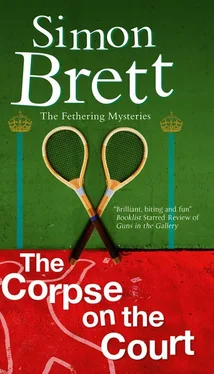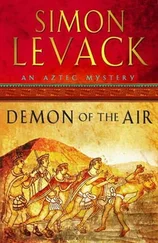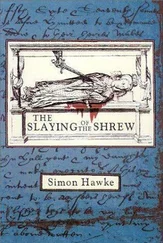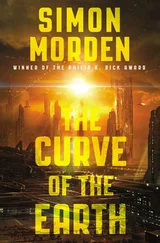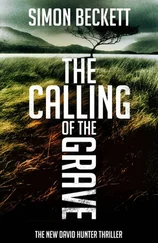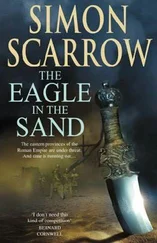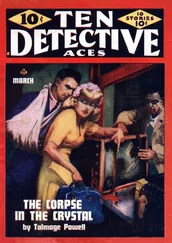Simon Brett - The Corpse on the Court
Здесь есть возможность читать онлайн «Simon Brett - The Corpse on the Court» весь текст электронной книги совершенно бесплатно (целиком полную версию без сокращений). В некоторых случаях можно слушать аудио, скачать через торрент в формате fb2 и присутствует краткое содержание. Жанр: Криминальный детектив, на английском языке. Описание произведения, (предисловие) а так же отзывы посетителей доступны на портале библиотеки ЛибКат.
- Название:The Corpse on the Court
- Автор:
- Жанр:
- Год:неизвестен
- ISBN:нет данных
- Рейтинг книги:5 / 5. Голосов: 1
-
Избранное:Добавить в избранное
- Отзывы:
-
Ваша оценка:
- 100
- 1
- 2
- 3
- 4
- 5
The Corpse on the Court: краткое содержание, описание и аннотация
Предлагаем к чтению аннотацию, описание, краткое содержание или предисловие (зависит от того, что написал сам автор книги «The Corpse on the Court»). Если вы не нашли необходимую информацию о книге — напишите в комментариях, мы постараемся отыскать её.
The Corpse on the Court — читать онлайн бесплатно полную книгу (весь текст) целиком
Ниже представлен текст книги, разбитый по страницам. Система сохранения места последней прочитанной страницы, позволяет с удобством читать онлайн бесплатно книгу «The Corpse on the Court», без необходимости каждый раз заново искать на чём Вы остановились. Поставьте закладку, и сможете в любой момент перейти на страницу, на которой закончили чтение.
Интервал:
Закладка:
TWENTY-EIGHT
The day after Reggie Playfair’s funeral, Jude felt restless. She was beginning to realize that this would be a feature of any relationship she had with Piers Targett. While they were together she believed and trusted him. It was only when they were apart that the doubts crept in.
She also felt she should be catching up on some overdue healing sessions, but knew she was too distracted to summon up the necessary concentration to make them effective. And that made her guilty and unsatisfied.
She’d seen Carole Seddon go past Woodside Cottage a couple of times. Gulliver was doing well for walks that day. But Carole had made no attempt to contact her and Jude was quite relieved about that. There was still a slight awkwardness between the neighbours about her new lover. At some point Jude knew she must introduce Piers to Carole properly, but it was not an occasion she looked forward to with much relish. Of course they’d be perfectly polite to each other, but Jude would be aware of her friend’s customary spikiness and overreaction. She couldn’t somehow see them doing many social events as a threesome. And Carole would resent that.
Jude was also relieved — and at the same time guilty — about the fact that she hadn’t brought Carole up to date on the advances she had made on the Reggie Playfair investigation. And that again was tied in with her closeness to Piers Targett. It wouldn’t be easy to pass on what he had told her about his unstable wife’s antics at Lockleigh House tennis court. Or to explain why she didn’t want to spread the news of what Jonquil had been doing there.
And until she’d communicated that discovery to Carole, Jude didn’t feel she could tell her about Ned Jackson using the court for his assignations with Tonya Grace. Which made her feel even more guilty.
There was no doubt about it, being in love always had this effect on Jude. The experience was exhilarating, but also distracting. Her life didn’t run as efficiently when she had a lover. To use a tennis metaphor, it made her take her eye off the ball.
She tried to counter her restlessness by yoga, she went for a walk on Fethering Beach, picking up fish and chips to eat on the way, but neither of these resources brought Jude the calm they usually did. Both just seemed to increase the number of questions she wanted to put to Piers when she next saw him.
Eventually, with something close to desperation, willing to find anything that would stop the same thoughts circling round in her head, she picked up the book that Wally Edgington-Bewley had given her. Courts in the Act .
The introduction made it clear that this was ‘just the reminiscences of an old fogey of playing most of the real tennis courts of the world, recollections of amusing incidents and the great chums I have made in them.’ The book had been expensively produced and was illustrated by black-and-white photographs of the insides and outsides of courts, as well as a younger Wally Edgington-Bewley with some of his ‘great chums’ in their tennis whites. As a frontispiece to the book was a picture of the younger Wally in white shirt and long white trousers, holding a racket and leaning nonchalantly against a Rolls-Royce Silver Shadow. The caption read: ‘The Author with the Road-Eater’.
Courts in the Act had been a labour of love, which was never going to trouble the best-sellers’ charts. Wally’s style was dilatory and full of non-sequiturs. He was obsessed by recording the scores of every game he played, and on very few of the courts he played on did he think the quality of the balls were up to scratch.
Flicking through, Jude was surprised to see the unlikely places where there were real tennis courts. Hampton Court she knew about, and she would have expected them to exist at Lord’s, Queen’s Club, Oxford and Cambridge Universities. Paris and Bordeaux were perhaps predictable, but she would not have anticipated finding them in Philadelphia or Boston. And she would never in a million years have guessed there was one in Hobart, Tasmania.
It was Wally Edgington-Bewley’s estimate that there were forty-five active real tennis courts in the world, and of those twenty-seven were in the British Isles.
As Jude idly turned the pages, she found Courts in the Act had a certain charm. The author was clearly obsessed, but it was a harmless obsession. She wondered whether Wally Edgington-Bewley had ever married. She couldn’t see any mention of a wife, and she rather doubted whether the woman existed who could match his passion for real tennis. Or maybe his love of the game had left no room for other passions in his life.
Her eye was arrested by yet another photograph of men in whites holding tennis rackets. The younger Wally was clearly recognizable, but it took Jude a moment to identify the younger Reggie Playfair and the younger Piers Targett. With the passage of the years Piers had changed less. His body shape in the photograph was much the same as it was now. And though his hair was black back then, he still wore it long, flopping down from a centre parting.
Time had been less kind to the Reggie Playfair of the photograph. His younger version already had a substantial paunch, but his arms and legs were well muscled and he looked fit. The three of them would have had a very vigorous game.
But with whom? Who was the fourth who made up their doubles?
There was a partial explanation in the photo’s caption. It read: ‘Paris Court, Rue Lauriston — The Old One, The Thin One and The Fat One (The Fair One had gone off to slip into something elegant)’.
A woman, it had to be a woman. ‘The Fair One’. Was that a literal description of her colouring or just Wally’s old-fashioned gallantry?
Jude read the accompanying text with interest.
‘Paris was to be our next jaunt. The Road-Eater was hungry for the road and I was fortunate that my good chums, The Thin One, The Fat One and The Fair One had managed to persuade their better halves that nothing could be more helpful to the future of their marriages than accompanying The Old One on another jaunt, this time to Paris.
‘Now for lovers of real tennis, which they call jeu de paume , France is in many ways a bit of a disappointment. The frogs used to love the game, it was a favourite sport of many of their kings as evidenced in William Shakespeare’s great play Henry V , but then of course they had a bit of a hoo-ha known as the French Revolution. And suddenly being a toff was not so popular. In fact, if I might venture a pleasantry, it was a case of “Toff with his head!” And the same thing happened to the popularity of toffs’ games. And of course tennis (which is believed to come from the French word “ tenez ”) was one of those. And lots of the courts in Paris and the surrounding countryside were either demolished or used for other purposes, industrial or farming. It almost makes one weep to think of it.
‘But thank the Lord, there are a few courts still in use, and the Paris court in Rue Lauriston is one of them, very near the Arc de Triomphe. Also very handily just opposite the court is the Cimarosa Hotel, into which I and my three chums booked, planning to have two days of tennis without missing out on the Parisian gastronomic delights and fine wines for which Paris is so famous. Is there anything better on the earth after a game of tennis than to sit down with a bottle of Bordeaux Premier Cru?
‘We caught an early ferry to Dieppe, stopped for a menu gastronomique in Rouen and were ensconced in the Hotel Cimarosa in good time for our seven o’clock doubles. A close affair (on handicap) with The Old One and The Fat One finally overcoming The Thin One and The Fair One 6–4/5-6/6-3. And still time for an excellent dinner at a little bistro The Fair One knew from a time when she had been a Paris resident. No problem sleeping like tops that night!
Читать дальшеИнтервал:
Закладка:
Похожие книги на «The Corpse on the Court»
Представляем Вашему вниманию похожие книги на «The Corpse on the Court» списком для выбора. Мы отобрали схожую по названию и смыслу литературу в надежде предоставить читателям больше вариантов отыскать новые, интересные, ещё непрочитанные произведения.
Обсуждение, отзывы о книге «The Corpse on the Court» и просто собственные мнения читателей. Оставьте ваши комментарии, напишите, что Вы думаете о произведении, его смысле или главных героях. Укажите что конкретно понравилось, а что нет, и почему Вы так считаете.
